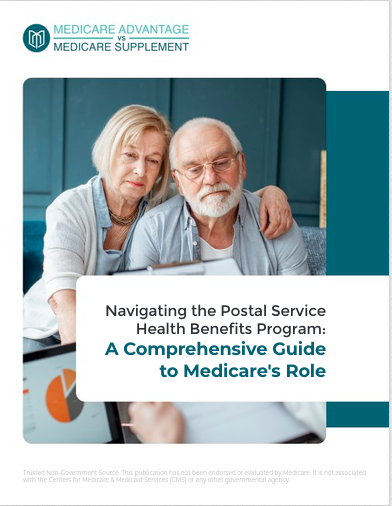Key Takeaways
-
Medicare Part A is often described as “premium-free,” but in 2025, that only applies if you meet specific work history requirements—and even then, other significant costs remain.
-
You are still responsible for a large deductible, daily coinsurance charges for extended hospital stays, and potentially thousands in uncovered services.
What “Premium-Free” Really Means in 2025
You might have heard that Medicare Part A doesn’t cost anything. That’s true only if you or your spouse worked and paid Medicare taxes for at least 40 quarters (or 10 years). In 2025, if you don’t meet this threshold:
-
You pay a monthly premium of $518 if you worked fewer than 30 quarters.
-
If you worked between 30 and 39 quarters, the premium drops to $284 per month.
Even if you qualify for premium-free Part A, the story doesn’t end there. Other out-of-pocket costs in 2025 can catch you off guard if you don’t prepare.
Hospital Deductibles You Can’t Ignore
Before Medicare Part A starts paying for your inpatient hospital stay, you must first pay a deductible. For 2025, the inpatient hospital deductible is $1,676 per benefit period. A benefit period begins the day you are admitted and ends after you’ve been out of the hospital or skilled nursing facility for 60 consecutive days.
You could end up paying this deductible more than once in a year if you’re hospitalized multiple times with different benefit periods.
Daily Coinsurance for Extended Stays
Once Medicare Part A kicks in, it covers your hospital stay costs for a limited time. But if your stay extends beyond a certain point, you start to share the financial burden. Here’s how it works in 2025:
-
Days 1–60: Fully covered after deductible.
-
Days 61–90: You pay $419 per day.
-
Days 91–150 (Lifetime Reserve Days): You pay $838 per day.
-
Beyond 150 days: You pay all costs—Medicare covers nothing.
It’s essential to understand that you only get 60 lifetime reserve days in total. Once they’re used, they don’t reset.
Skilled Nursing Facility (SNF) Costs
If you’re discharged from a hospital and transferred to a skilled nursing facility, Medicare Part A covers this too—but only under strict conditions:
-
You must have had a qualifying 3-day inpatient hospital stay.
-
The SNF stay must begin within 30 days of discharge.
In 2025, the cost structure is as follows:
-
Days 1–20: Fully covered.
-
Days 21–100: You pay $209.50 per day.
-
After Day 100: You pay all costs.
What Part A Doesn’t Cover
Even with Medicare Part A, certain services are not included. You’ll need to plan for these separately or look to other parts of Medicare or coverage options:
-
Outpatient care (doctor’s visits, outpatient surgery, etc.)
-
Prescription drugs during and after hospital stays
-
Custodial long-term care (e.g., help with bathing, dressing)
-
Private-duty nursing or personal convenience items during a hospital stay
-
Blood beyond the first 3 pints per year
These exclusions can add up fast, especially if you have a prolonged recovery or need long-term assistance.
How Part A Coordinates with Other Medicare Parts
Medicare Part A is only one piece of your healthcare coverage puzzle. You may also need:
-
Part B for outpatient care and physician services.
-
Part D for prescription drug coverage.
-
Medicare Advantage or other supplemental coverage if you’re looking to reduce out-of-pocket expenses.
While you can technically enroll in Part A alone, it leaves major gaps. Most people pair it with at least Part B.
Penalties for Delayed Enrollment
Most people are automatically enrolled in Medicare Part A at age 65 if they’re receiving Social Security. If you’re not, and you delay enrollment, you may face a penalty if you decide to enroll later.
The late enrollment penalty applies if you:
-
Aren’t eligible for premium-free Part A.
-
Miss your Initial Enrollment Period and don’t qualify for a Special Enrollment Period.
This penalty is 10% of your monthly premium and applies for twice the number of years you delayed enrollment. For example, if you delay for 2 years, you pay the higher premium for 4 years.
Hospital Services That Trigger Higher Costs
Just being in the hospital doesn’t always mean Medicare Part A will pay. You could be classified as an outpatient even if you stay overnight. That means:
-
Your care is billed under Part B, not Part A.
-
You may not qualify for SNF coverage afterward.
Ask your hospital if you’re admitted as an inpatient or being observed as an outpatient. The difference affects what Medicare pays and what you owe.
Cost Burdens Without Supplemental Coverage
If you rely on Part A alone, your financial exposure can be significant. For instance:
-
Multiple hospital stays can lead to repeated deductible payments.
-
Long hospital or SNF stays rack up daily coinsurance charges.
-
You’re fully responsible once lifetime reserve days run out or SNF days exceed 100.
Many beneficiaries turn to Medigap policies or Medicare Advantage plans to help manage these costs. But even with these, you’ll still be responsible for premiums and cost-sharing.
Timing Matters: Enrollment Windows You Should Know
Enrollment for Medicare Part A typically happens in one of these windows:
-
Initial Enrollment Period (IEP): Starts 3 months before your 65th birthday, includes your birth month, and ends 3 months after.
-
General Enrollment Period (GEP): January 1 – March 31 each year. Coverage starts July 1. Late penalties may apply.
-
Special Enrollment Period (SEP): If you delayed due to employer coverage and qualify for an exception.
Missing these windows may result in delayed coverage or higher premiums.
Annual Changes: Why It’s Not a One-Time Decision
Medicare Part A deductibles and coinsurance amounts are reviewed and adjusted each year. The 2025 figures have already increased compared to 2024:
-
Deductible went up by $32.
-
Daily coinsurance for hospital days 61–90 rose by $8.
-
SNF coinsurance increased by $4.50.
Even if you budgeted for costs last year, you need to reassess annually to avoid underestimating your expenses.
Don’t Overlook These Financial Gaps
Here are some less obvious costs you might run into with Medicare Part A in 2025:
-
Transportation: Ambulance rides may not be fully covered.
-
Home health care limits: Only medically necessary services qualify.
-
Hospice care nuances: Covered, but not all services are free.
Knowing what isn’t covered helps you avoid surprise bills. It also helps you decide if you need to explore additional insurance or savings options.
Rethinking “Free”—Your 2025 Medicare Strategy Starts Here
Medicare Part A offers crucial hospital coverage, but calling it “free” is misleading. Whether it’s the $1,676 deductible, costly coinsurance after 60 days, or the daily SNF charges past day 20, these expenses can add up quickly.
You owe it to yourself to understand what Part A truly covers—and what it doesn’t. Before you assume you’re fully protected, talk to a licensed agent listed on this website. They can help you plan for the gaps and avoid financial surprises down the road.









